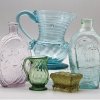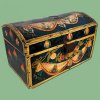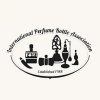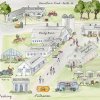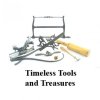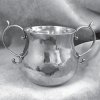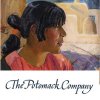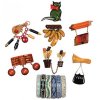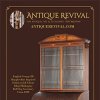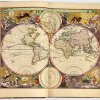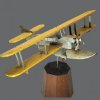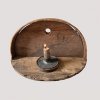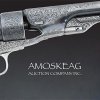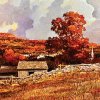The ADA/Historic Deerfield Antiques Show
October 9th, 2016
Deerfield, Massachusetts
Polished and unpretentious, the ADA/ Historic Deerfield Antiques Show on October 8 and 9, 2016, in Deer-field, Massachusetts, compelled visitors to swarm the place at opening, and many sales were consummated within minutes. A few took a little longer, but not much. Day one was fine weather, and long lines awaited the 11 a.m. opening. The second day brought a chilling rain, and attendance was off. Still, buyers were out in force.
Seasoned collectors and dealers and Historic Deerfield board members mixed with curious Deerfield Academy students. Questions were answered and purchases made. Since the Antiques Dealers’ Association of America (ADA) requires dealers to guarantee the antiques they sell, buyers act with confidence. Historic Deerfield president Philip Zea was everywhere.
The planned March 2017 demolition of the Deerfield Academy ice skating rink to make way for new sports facilities is a temporary fly in the ointment. The search is on for alternative space in the area for next year’s show. Stay tuned.
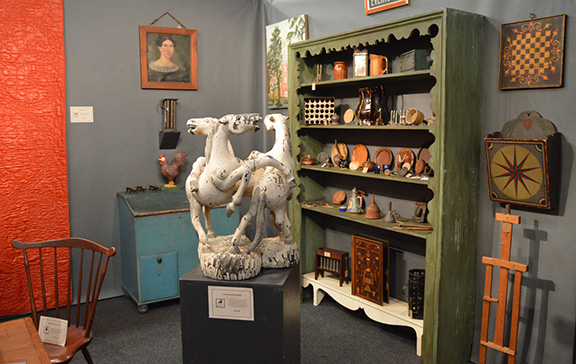
Hanging at far left, a calamanco (wool with a sheen) hand-stitched quilt, circa 1790, with a glazed brilliant red-orange front and a back in tan, was priced at $12,500 from Axtell Antiques, Deposit, New York. It was a stunning backdrop for Axtell’s The Pharaoh’s Horses, which was carved from a single piece of white oak in New York state. Other offerings included a folk art carved wood rooster, signed by A. Hoffman of Pottstown, Pennsylvania, and dated 1892, and a group of six insect-form match safes priced at $2400.
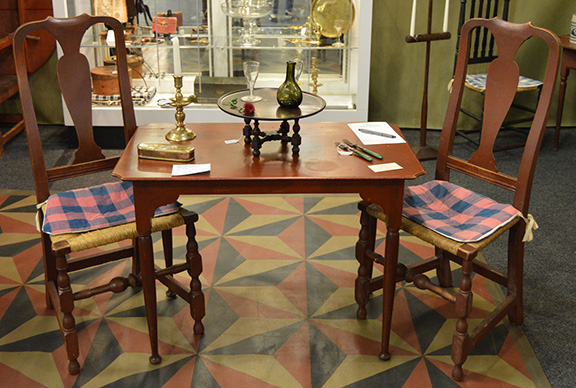
Hollis Brodrick of Portsmouth, New Hampshire, offered a New Hampshire rectangular tea table with a cut-corner top and on button feet, made 1760-75 in the Dover area. It had been in the collection of Charlotte Hilton of North Berwick, Maine, and was $7750. An oval tea table (not shown) on button feet with a two-board top sold early.
Husband and wife Joan R. Brownstein and Peter Eaton of Newbury, Massachusetts, shared a booth by the entrance, as is their custom. Brownstein had a portrait of a young lady by William Kennedy (1818-after 1870), a 20" x 14½" image on artist board signed and dated 1845 on the backboard and mahogany veneer frame. The liner had been removed to permit a view of the painting’s edges. Eaton had a rare and early (third quarter of the 18th century) roundabout chair in maple and pine on turned legs and stretchers. It was originally red; a coat of black paint with striping was added in the mid-19th century. Eaton’s label described it in “as descended” condition and noted that he has owned it three times, having seen it first in the 1970s at Roger Bacon’s. Eaton also showed a country Chippendale birch candlestand with an inlaid pinwheel on the top, a single drawer with a cherry front, and inlaid banding, which was probably made in Connecticut in the late 18th century. He’d had a missing pinwheel element and the drawer front restored, and the stand was tagged $4500. Both the chair and the candlestand sold.
 Brownstein offered a portrait by Joseph H. Davis of a family before a fireplace, made sometime around 1833 to 1835. It depicts parents seated in painted chairs facing each other, the father with a book, the mother sewing, and three children playing on the vividly patterned carpet, two with a toy, and in the baby’s case, a rose. The setting was highly detailed, with a smoke-decorated fireplace surround, two bowls of flowers on the mantel below two wreaths flanking the fancy banjo clock, and the patterned carpet and a patterned border atop the wall. In watercolor and pencil and ink on paper, 15" x 9", it was tagged $39,000.
Brownstein offered a portrait by Joseph H. Davis of a family before a fireplace, made sometime around 1833 to 1835. It depicts parents seated in painted chairs facing each other, the father with a book, the mother sewing, and three children playing on the vividly patterned carpet, two with a toy, and in the baby’s case, a rose. The setting was highly detailed, with a smoke-decorated fireplace surround, two bowls of flowers on the mantel below two wreaths flanking the fancy banjo clock, and the patterned carpet and a patterned border atop the wall. In watercolor and pencil and ink on paper, 15" x 9", it was tagged $39,000.
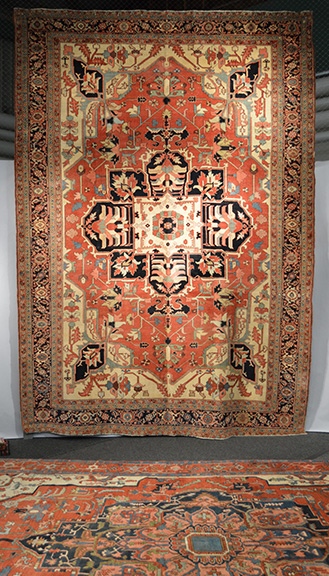
Oriental Rugs, Ltd., Old Lyme, Connecticut.
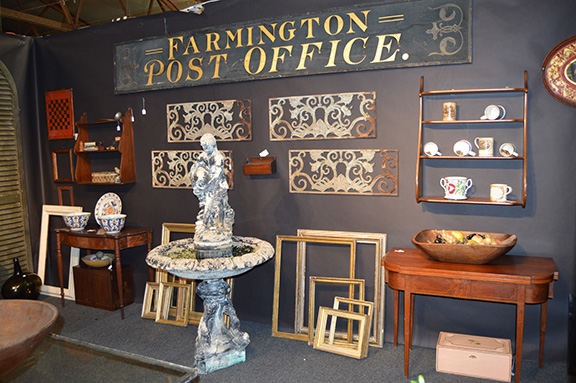
The booth of John Hunt Marshall of Florence, Massachusetts.
Deerfield students were observed making tracks to Robert Lloyd’s booth, where they gazed at such gems as the 1950 oil on canvas proof for the S. H. Benson, Ltd. advertising agency’s campaign for the Guinness brewery made for the American market. “Your Country Needs Guinness” was artist John W. Gilroy’s take on the 1917 recruiting illustration of Uncle Sam by James Montgomery Flagg. It was priced at $45,000. Lloyd also showed Gilroy’s pen and ink drawings of figures such as Tweedledum and Tweedledee, Alice, and the Mad Hatter from Lewis Carroll’s 1865 Alice’s Adventures in Wonderland promoting Guinness. An early 18th-century octagonal coffeepot, made in London around 1715, was an unusual collaboration between Huguenot goldsmith David Willaume, who made the pot, and his apprentice Pierre Platel, who made the stand. It was tagged $34,500. A George III silver punch strainer was made in Glasgow in 1811 by Robert Gray & Son but hallmarked for Edinburgh. It was tagged $12,500. A pair of alabaster plaques, circa 1500, was made in Nottingham, England. The pair was priced at $18,500. Lloyd, based in New York City, made sales to a number of New Yorkers who were shopping the show.
Sold stickers peppered the framed antique needlework offerings in Stephen and Carol Huber’s booth early in the day. Ten-year-old Mary Greenleaf’s sampler, worked at the Ann Waters Woodman School in Newbury, Massachusetts, in 1796, includes facing parrots that are characteristic of that school. It was priced at $21,000. Jephtha’s Rash Vow, a circa 1810 silk embroidery by a student at the Misses Pattens’ School in Hartford, Connecticut, depicts Jephtha returning home to his daughter after war. His displeasure at seeing her stems from a vow he made to God before the war that he would sacrifice the first thing to greet him when he returned home. The theme of repenting rash vows was popular at the Misses Pattens’ School and the Lydia Royse School in Hartford. The embroidery was tagged $16,500. A silk-embroidered memorial with watercolor, metallic thread, and velvet, circa 1802, worked by Elizabeth Dickinson of Amherst (who was, according to the Hubers, a cousin to Emily Dickinson) was thought to have been worked at the Abby Wright School in South Hadley, Massachusetts. It was priced at $12,000. A silk-embroidered memorial to George Washington, with metallic thread, watercolor, and ink, circa 1810, was inscribed “America Lamenting Her Loss at the Tomb of Washington” and was most likely worked at the Misses Pattens’ School. It was tagged $8500. A North Carolina silk on linen example worked by 12-year-old Mary Lydia Speaight of Perquimans County in 1832 was tagged $5800 and also sold early.
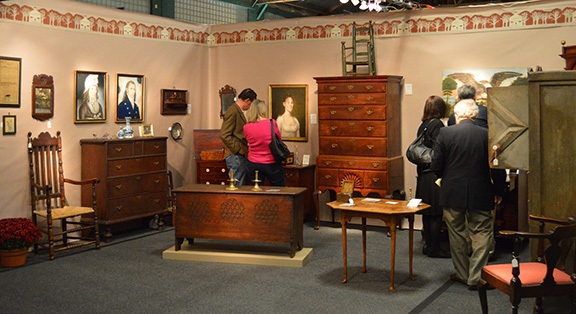
Also from Nathan Liverant and Son was a Massachusetts yellow pine lift-top chest, carved with geometric designs and initialed “JP,” likely for John Porter of Hampshire County. It sold early in the show, as did a New England William and Mary blanket chest with a lift top over a case of drawers with double-arched surrounds that was dated between 1720 and 1745.
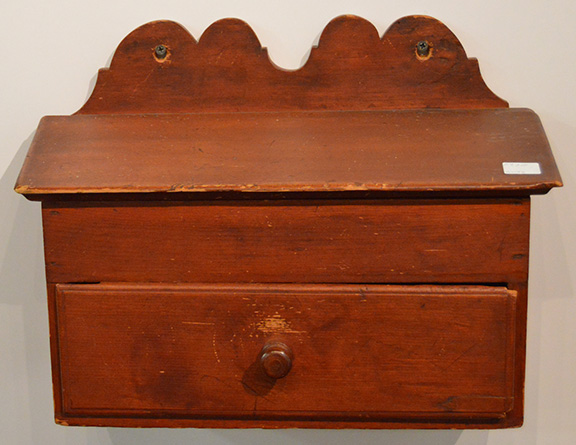
Lewis W. Scranton of Killingworth, Connecticut, an early member of the ADA, showed this rare and beautifully carved wall box with a lift top and a single drawer; it was tagged $4300. Not shown, a Gonic redware jug was tagged $500. A hooked rug that retains the original strong colors was worked with two black Scottie dogs against an abstract background that seems to include the front end of a cow. It was tagged $575.
Despite the success of the on-site sale of his collections at his Connecticut home last May, Scranton is still dealing. Of the sale, he said that he did his children a favor because “they wouldn’t know what to do with it all.” He also had high praise for Skinner staff—particularly for Steve Fletcher, whom he has known for 47 years.
Sandy Jacobs and Scott Bassoff brought an 18th-century Portuguese Castelo Branco needlework bed valance depicting a man and a woman amid a variety of flowers and birds, suggestive of nuptials and which may have been a wedding gift. It was $3500. They also offered a couple of portrait miniatures. One was a Philadelphia example with a brown-haired man in a blue coat, whose name was on the back. It was tagged $1500. The other, an English example depicting a young man with blond curly hair, was priced at $650. A folky early 20th-century American erotica construction priced at $3500 was labeled in block print on the front “FOR MEN ONLY.” Jacobs and Bassoff had sold a flat-cut cigar-store Indian.
Jonathan Trace showed a French plate coffeepot, “the only one I’ve ever seen with that patina.” An eastern Massachusetts, probably Boston, Queen Anne walnut dressing table with a molded top with inlay above a single long drawer over three smaller drawers, all with line inlay, and a boldly shaped apron with turned drops was dated 1730-40 and tagged $6500. An 18th-century New England Queen Anne mahogany tea table, circa 1750, with a pleasingly shaped top and apron was priced at $6500.
A Thomas Chandler, Edgefield, South Carolina, stoneware jar with an ash glaze and kaolin decoration, circa 1840, with distinctive slip decoration, came from an old collection and was available at $12,500 from David L. Good of Camden, Ohio. Good displayed firearms on a wall of his booth. A fowler that at 7'4" is probably the second-longest example in the U.S. was made around 1824 by Silas Allen Jr. of Shrewsbury, Massachusetts, where he had opened his shop in 1806. It was tagged $10,500. Another example was decorated on the stock with a horse head.
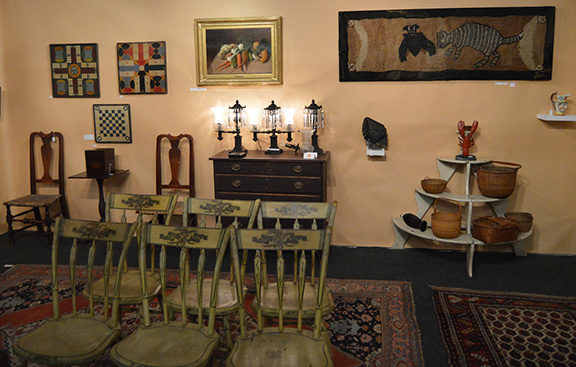
Langenbach’s Fine Arts & Antiques, Kingston, Massachusetts.
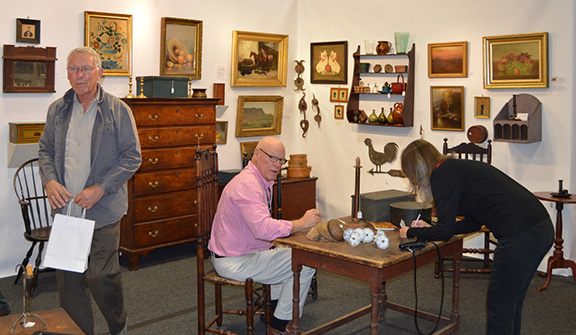
Derik Pulito Antiques, Kensington, Connecticut.
Elliott and Grace Snyder showed a paint-decorated tall-case clock, 90" x 16", that was jazzy to say the least. It was made between 1815 and 1825 by Luman Watson of Cincinnati, Ohio, who signed the dial, and was tagged $27,000. Tagged “A Great Survivor,” a circa 1750 three-drawer Connecticut pine blanket chest was priced at $11,500. Two late 18th-century graphically compelling and matching sheet-iron tabletop lighting devices on arched and elaborately scrolled bases were reported to have come from a New Jersey church. The larger example was tagged $9500; the smaller was $7800.
John Keith Russell showed a table-top cabinet in maple with figured maple and pine with tapered cleats and bone escutcheons from the Hancock, Massachusetts, Shaker community. It was made around 1830 and was tagged $15,000. A New Hampshire Shaker chest, circa 1830, most likely made at the Enfield community and in the original old blue paint was priced at $42,000. A peppery-red-lidded pine pail, circa 1880, was stamped “N.F. Shakers, Enfield, N.H. 2” and was made with diamond escutcheons and a bent wire and hardwood handle. It had been part of the McCue collection and was priced at $4500.
A large Portuguese pottery duck tureen was made at the Real Fábriça de Louca do Rato in Lisbon, an annex of the Real Fábrica das Sedas, in the late 18th or early 19th century. Earle D. Vandekar of Knightsbridge priced it at $12,500. A 16½" Leeds pearlware stallion, 1820-30, was tagged $30,000.
For more information, check the website (www.adadealers.com).
Originally published in the January 2017 issue of Maine Antique Digest. © 2016 Maine Antique Digest
